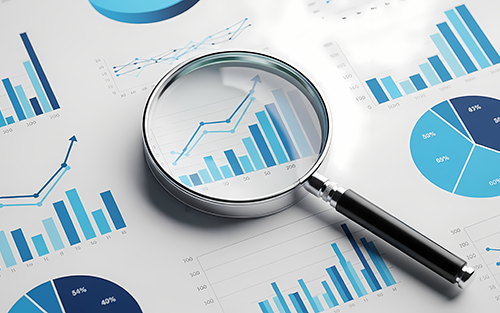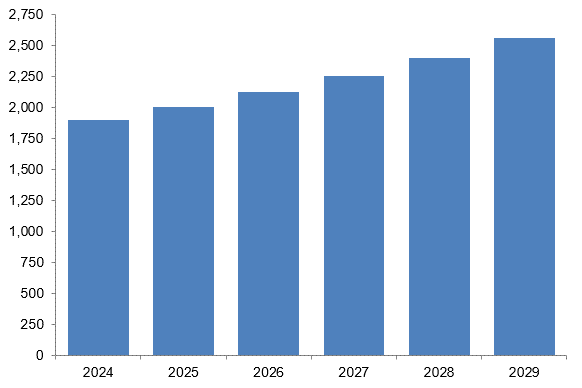- October 01, 2025
- News
Summary
A new market study from Flow Research finds that the Coriolis flowmeter market is expanding on many fronts.

WAKEFIELD, Massachusetts, Oct. 1, 2025 – A new market study from Flow Research finds that the Coriolis flowmeter market is expanding on many fronts. First introduced by Micro Motion in 1977, Coriolis flowmeters have consistently outperformed much of the competition, and have expanded in multiple areas in the last four decades. The study, The World Market for Coriolis Flowmeters, 8th Edition, found that the worldwide flowmeter market was $1.9 billion in 2024, and is projected to exceed $2.4 billion by 2029. The market is projected to grow at a compound annual growth rate (CAGR) of 6.2 percent throughout the forecast period.
Coriolis suppliers continue to push the performance envelope for Coriolis meters in many different ways. Coriolis meters are more accurate than ever, and diagnostic software provides constant performance monitoring and helps predict when recalibration is needed. Straight tube meters–both single and dual–are addressing the issue of clogging fluid that some bent tube meters experience. They also have minimal upstream and downstream straight run requirements, and offer ease of installation. Due to their compact construction, they fit more easily into tight spaces.
Coriolis meters are making bringing out new products at both ends of the size spectrum. More suppliers now offer Coriolis meters in line sizes, from 6 to 16 inches. These meters tend to be quite large and heavy, but are valued for custody transfer of petroleum liquids and natural gas. At the other end of the spectrum, companies are building Coriolis meters of 1/16th inch for applications such as chemical injection of catalysts or treatment chemicals into pipelines. Other uses include dosing, batching small pharmaceuticals, food ingredients, and specialty chemicals. They are also used for fragrances, expensive additives, and special fluids. Some meters are also made as small as 1/32nd inch for laboratory applications, though these tend to be fragile and subject to clogging.

In the 2-to-4-inch pipe sizes, Coriolis flowmeters compete with ultrasonic and turbine meters. Coriolis meters are approved by APA-11 for fiscal metering of natural gas, and their high accuracy makes them very desirable in these line sizes. They are used for precise measurement of natural gas feed to boilers, furnaces, and turbines. Other uses include CNG and LNG distribution and filling stations. Coriolis meters compete strongly here because accuracy at low and varying flowrates is critical, and density information is valuable.
The distinction between purchase cost and cost of ownership, or lifecycle cost, works very favorably for Coriolis meters. Even though Coriolis meters have a higher purchase cost than many other flowmeters, they may cost less over the lifetime of the meter due to reduced maintenance costs. Unlike turbine and positive displacement meters, Coriolis meters do not have moving parts apart from the vibrating tube. They are not subject to wear in the way that orifice plates are. With many companies reducing their engineering and maintenance personnel, having a meter that does not require a great deal of maintenance can be a major advantage, with savings accruing over time.
Coriolis meter improvements include the use of stronger and lighter materials of construction like titanium that extend the life of the meter. Recently introduced sensor tube materials such as super duplex increase the resistance of the meter to pitting corrosion, which occurs when small cavities form in the flowtube walls. These new materials make the flowmeter capable of handling corrosive fluids that previously would have distorted flowrate measurements due to the internal erosion of sensor tubes made from less corrosive resistant material.
According to Dr. Jesse Yoder, president of Flow Research: “It is hard to overstate the importance of Coriolis flowmeters to the broader flowmeter market. Coriolis suppliers have consistently done extensive product research and development to improve these meters in many ways. These include accuracy levels, materials of construction, line size, bent and straight tube types, and the development of models for specific applications. One of the latest and most critical measurements is of hydrogen and renewable natural gas (RNG), in addition to CNG and LNG. Expect Coriolis meters to be at the forefront of measurements required for the energy transition. These meters will almost certainly continue on their upward trajectory as suppliers release new products for multiple applications.”
About Flow Research
Flow Research is the only independent market research company whose primary mission is to research flowmeter and other instrumentation products and markets worldwide. Flow Research, founded in 1998 in Wakefield, Massachusetts, specializes in flow measurement devices, and conducts market research studies in a wide variety of instrumentation areas. These studies are developed through interviews with suppliers, distributors and end users. The company has a special focus on the energy industries, especially on oil and gas production and measurement, and on renewable energy.
Learn MoreDid you enjoy this great article?
Check out our free e-newsletters to read more great articles..
Subscribe

